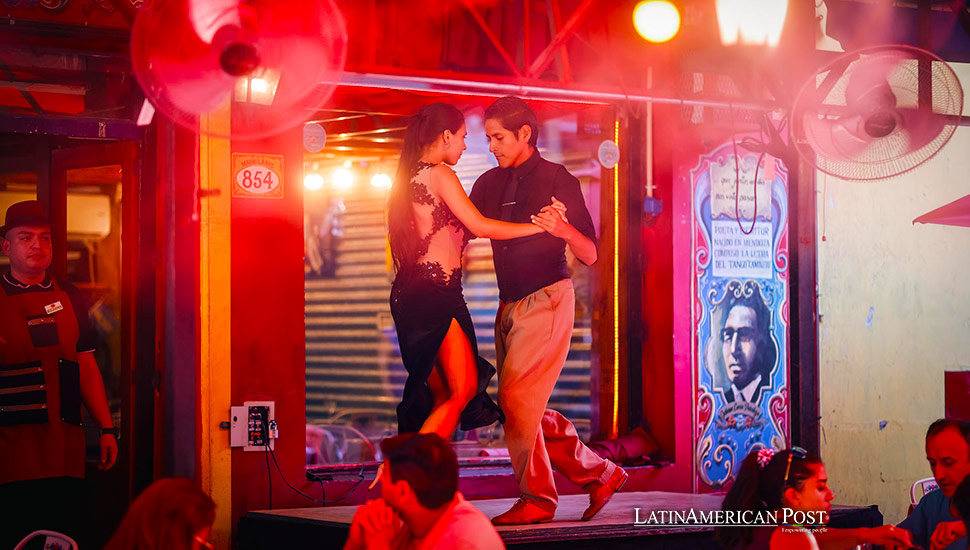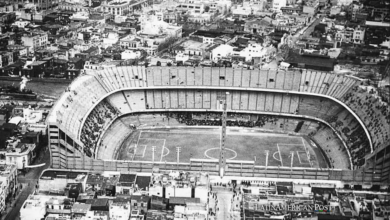Tango’s Enduring Legacy in Buenos Aires, Argentina Amid Economic Hardships

Fifteen years after being recognized as part of UNESCO’s Intangible Cultural Heritage of Humanity, tango remains a vibrant element of Buenos Aires’ cultural landscape despite the sacrifices many artists endure to dedicate their lives to this globally renowned art form.
In the heart of Buenos Aires, the timeless rhythms of tango continue to pulse through the city’s veins, reflecting both the pride and challenges faced by those who keep this art form alive. Fifteen years after its inclusion in UNESCO’s Intangible Cultural Heritage of Humanity list, tango remains an integral part of Buenos Aires’ cultural identity, celebrated in cafes, on bustling streets, and in iconic locations such as the Recoleta Cemetery and the historic neighborhood of San Telmo.
Tango, with its deep roots in the cultural fabric of Buenos Aires and Montevideo, transcends mere entertainment; it is a living testament to the shared heritage of Argentina and Uruguay. The official recognition by UNESCO on September 30, 2009, in Abu Dhabi, marked a significant milestone for the tango community. However, the reality for many tango artists is far from glamorous as they navigate a landscape marked by economic instability and political turmoil.
Beneath the modern silhouette of the Puente de la Mujer, designed by Spanish architect Santiago Calatrava and a symbol of 21st-century Buenos Aires, dancers Florencia and Javier lose themselves in the sumptuous tango melodies. Their movements captivate tourists, who capture every step on their mobile phones, often expressing the sensuality and passion that define this dance.
“Tango feels like the essence of Argentina,” says João, a Brazilian tourist, comparing its allure to samba in his home country.
The Struggles of Tango Artists
Despite the global admiration for tango, the artists who dedicate their lives to this craft face significant challenges. Florencia, who abandoned a job in the hospitality industry to pursue her passion for dance, highlights the lack of appreciation and financial support for tango within Argentina. “Tango is not well valued or well paid here,” she notes, a sentiment echoed by many in the community.
Florencia and Javier have spent the past eight months performing on the streets and in restaurants, relying on tips from passersby to make a living. They often face harsh weather conditions, such as the biting cold of Buenos Aires’ winter, which further complicates their already challenging situation. Argentina’s economic realities, with an interannual inflation rate of 289.4% as of April, exacerbate their struggles. The decline in tourism during Buenos Aires’ colder months further compounds these challenges, reducing their potential earnings.
“Tango is much more appreciated abroad. We have friends who perform outside Argentina, where they are well regarded and better compensated,” Florencia explains. In contrast, local venues offering live tango show in Buenos Aires pay dancers poorly, forcing many to rely on donations to survive.
The Historical and Cultural Significance of Tango
Tango’s origins date back to the late 19th century, when it emerged from the working-class neighborhoods of Buenos Aires and Montevideo. It was a melting pot of influences, blending African, European, and indigenous elements into a unique cultural expression. The dance and music of tango encapsulate themes of longing, heartbreak, and resilience, mirroring the lives of those who created it. Tango was not just a dance; it was a way for the marginalized communities of Buenos Aires to express their joys and sorrows, their hopes and fears.
Historically, tango has been a powerful narrative tool, transforming personal and collective sorrows into compelling stories through music and dance. This tradition continues as modern tango artists grapple with the socio-economic challenges of contemporary Argentina, infusing their performances with a poignant blend of nostalgia, celebration, and satire.
Recognizing tango’s enduring cultural significance, the National Historical Museum in Buenos Aires hosts a series of events starting this Thursday. The program will explore the rich history of tango, its most iconic artists, and its ongoing relevance in Argentine society. This celebration aims to honor the legacy of tango and its designation as part of the Intangible Cultural Heritage of Humanity.
Armando Sartorotti, the exhibition curator, shares his insights from the project. While he may have learned little about the technical aspects of tango, he gained a deeper understanding of the human spirit. “I learned about sacrifice, resilience, pride, and humility. The players from 1924 traveled in third class on the Desirade, just as our ancestors did when they came here, and we see them laughing and training on the ship’s deck in one of the photos,” he says.
The Tango Scene Today
Today, the tango scene in Buenos Aires is a mix of tradition and innovation. While many artists struggle with financial instability, they continue to perform with passion and dedication. Tango schools and milongas (social dance events) provide spaces for locals and tourists to learn and experience the dance firsthand. These venues play a crucial role in preserving the cultural heritage of tango, ensuring that it remains a living, evolving art form.
The economic hardships faced by tango artists reflect broader issues within Argentina. The country’s recent economic crises have affected all sectors, and the arts are no exception. Despite these challenges, the spirit of tango endures, driven by the resilience and creativity of its practitioners.
Beyond Argentina and Uruguay, tango has a global presence, with dedicated communities and festivals worldwide. This international appreciation not only highlights the universal appeal of tango but also fills us with pride for our cultural heritage. It provides opportunities for artists to perform and teach abroad, offering better financial rewards and greater recognition than they receive at home.
The international passion for tango also underscores the importance of cultural exchange. As tango spreads across the globe, it continues to evolve, influenced by its practitioners’ diverse backgrounds and interpretations. This dynamic exchange enriches the art form, ensuring its relevance and vitality.
A Call for Greater Recognition and Support
As Argentina celebrates fifteen years of UNESCO recognition for tango, there is a growing call for more significant support and appreciation for the artists who keep this tradition alive. The government and cultural institutions must recognize the considerable contributions of tango to the country’s cultural heritage and provide the necessary support to sustain this art form. This is not just a plea from the tango community; it’s a call to action for all those who value and appreciate the cultural richness that tango brings to Argentina and the world.
This support, in the form of financial assistance, grants, and fair compensation policies, is crucial for the survival and growth of tango. By investing in the cultural sector, Argentina can help secure the future of tango and ensure that it continues to thrive both locally and internationally. The urgency of this call for support cannot be overstated.
Tango is more than just a dance; it is a symbol of Argentine and Uruguayan identity, a testament to the resilience and creativity of its people. As Buenos Aires celebrates this milestone, it is a time to reflect on the sacrifices made by the artists who keep tango alive and acknowledge their challenges.
The “4 Estrellas” exhibition in Montevideo is a powerful reminder of tango’s rich history and enduring legacy. Through photographs, artifacts, and personal stories, it captures the essence of tango and its significance in the cultural landscape of Argentina and beyond.
Also read: Argentine City Celebrates Its Own Michelangelo’s David
As the world continues to embrace tango, supporting the artists who dedicate their lives to this beautiful and evocative art form is essential. By doing so, we ensure that the spirit of tango remains vibrant and that future generations can continue to experience its magic.





